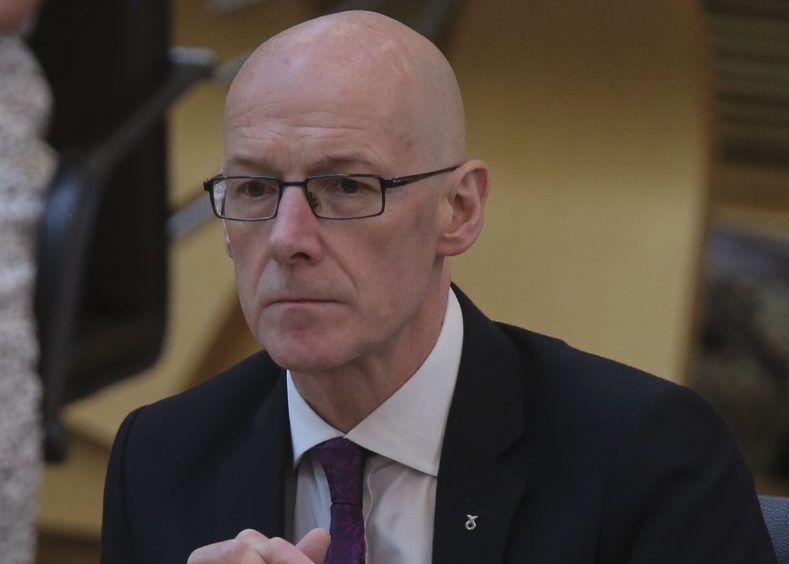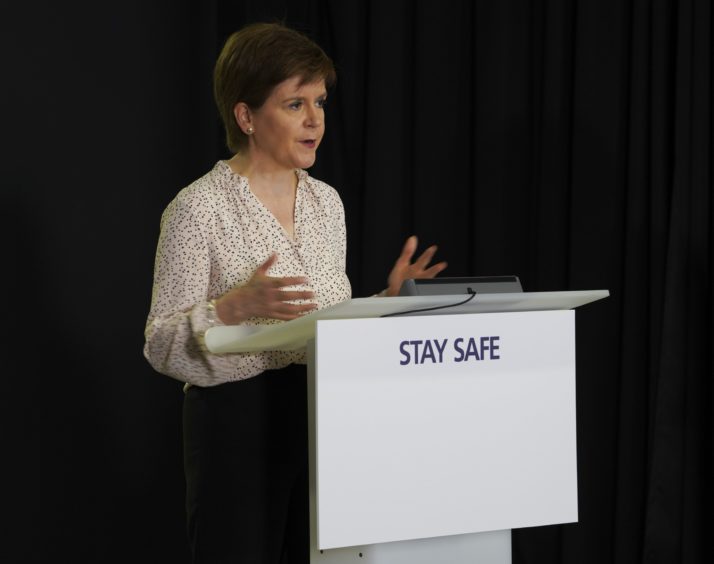Older pupils may have to wear face coverings and perspex screens may have be put up in classrooms when schools return in August, it has emerged.
The prospect of anti-coronavirus protective measures being in place at the beginning of term was raised when Nicola Sturgeon and John Swinney were quizzed over their education plans.
At her daily coronavirus briefing, Ms Sturgeon said she had “100%” confidence in Mr Swinney, despite the government’s dramatic U-turn on how schools will come back on August 11.
The first minister defended her education secretary as Scotland’s largest teaching union the EIS expressed reservations about Mr Swinney’s revised plan to resume full-time schooling.
The EIS has raised concerns about Mr Swinney’s decision to ditch his plan for “blended learning” – a combination of home schooling and classroom teaching – for a conventional return.
Blended learning remains the Scottish Government’s contingency plan if the virus has not retreated enough for the safe return of full schooling.
Parents had welcomed Mr Swinney’s about-turn and education experts had said home learning would increase inequality and warned school closures risked psychological damage.
In an interview with Bauer Media radio, Mr Swinney said the final decision on whether full-time schooling can go ahead could come on the July 30 review date – 12 days before schools are due to reopen.
“In all likelihood, I don’t think we could resume full-time schooling if we didn’t have a green light by July 30,” Mr Swinney said.
Older children may have to wear masks in the classroom
The Education Secretary also suggested older pupils might need to wear face coverings to protect themselves at school.
Mr Swinney said they would not be for primary-aged pupils, but added: “When you get slightly older you get on to different grounds because we are talking about young adults.”
When asked if they were appropriate for high school and university students, he said: “I think there is an issue the older young people become, yes.”
Perspex shields to be considered, says Sturgeon
The EIS has called for masks and Perspex shields to be considered to minimise staff and pupil exposure to the virus.
Mr Swinney said he was “not personally sympathetic” to the idea of classroom screens but said their use would be subject to scientific advice.
At her Ms Sturgeon briefing said the use of Perspex shields should not be assumed, but they would be considered.
“All of these ideas and suggestions that legitimately being made about how we make sure our schools are safe will be properly and thoroughly considered. We want children back in school full-time in August,” she said.
Education was a dominant theme at the first briefing held by the first minister since the Scottish Government’s U-turn earlier this week.
Ms Sturgeon was quizzed about an EIS message to teachers which said the volte-face had “sparked considerable debate, anxiety, frustration, confusion and even anger amongst many members”.
The message, from EIS General Secretary Larry Flanagan, said the change of plan was a “political announcement”, which was not an agreed outcome with the Education Recovery Group, set up to work on the return of schools.
Mr Flanagan said the union was not convinced that no physical distancing between pupils is safe.
He added: “We are absolutely certain that physical distancing between pupils and teachers remains essential.”
During her briefing, Ms Sturgeon was asked repeatedly about the Scottish Government’s change of plan.
Asked if she had confidence in Mr Swinney, she replied “100%”. Ms Sturgeon argued the unpredictable nature of the crisis facing the country meant it was unfair to criticise the government for changing its plans.
She denied the government’s plans had been “half-baked” and warned changing circumstances might led to reversion to the blended learning contingency.
Ms Sturgeon said: “As weeks have passed and as our progress in tackling this virus has been beyond what we dared to hope it might be, we’ve changed the principle planning assumption to reflect that.
“If I’m standing here three weeks from now – and I should say I hope it’s not the case and I have no reason to expect it will be – reporting numbers that are going in the wrong direction, then I may well be saying that we’re in a different place again.
“If you ever hear me say ‘here’s a fixed plan that we will not change regardless of what happens with the virus’, then know that I’ve stopped doing my job properly.
“You have to plan for the most likely scenario and then if it changes you have to be adaptable.”


